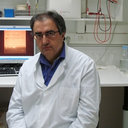Herpes simplex virus as a determinant risk factor for coronary artery atherosclerosis and myocardial infarction.
Nyckelord
Abstrakt
BACKGROUND
Viruses have been detected in atherosclerotic and non-atherosclerotic vascular tissues and may be involved in the mechanisms of atherogenesis. In the present study, we investigated the role of herpes simplex virus (HSV) in the early and late stages of coronary artery atherosclerosis.
RESULTS
HSV prevalence was investigated in coronary artery samples from 42 autopsy cases, in which death was related to myocardial infarction (MI), and 28 young age autopsy cases without heart disease, who had died from fatal injuries (young victim group), using nested polymerase chain reaction (nPCR) and the highly sensitive in situ hybridization with tyramide signal amplification (ISH-TSA). HSV was detected by nPCR in 18 out of 42 (43%) myocardial infarction cases and in 7 out of 28 (25%) young victim group cases, respectively. Using ISH-TSA, HSV DNA was detected in the coronary arteries of the MI group in 16 out of 42 (38%) of the cases; the hybridization signal was localized in the nuclei of endothelial cells, the nuclei of smooth muscle cells, the macrophages around the atheroma, and in the lymphocytes infiltrating the vascular wall. In the young victim group, HSV DNA was detected by ISH-TSA in 7 out of 28 (25%) autopsy cases; the signal was localized in the endothelial and the intimal spindle cells of the coronary arteries.
CONCLUSIONS
The findings of this study suggest that HSV seems to play a significant role in the initiation and progression of coronary atherosclerosis, and may open new perspectives in preventing the development of vascular damage via an appropriate antiviral treatment.


